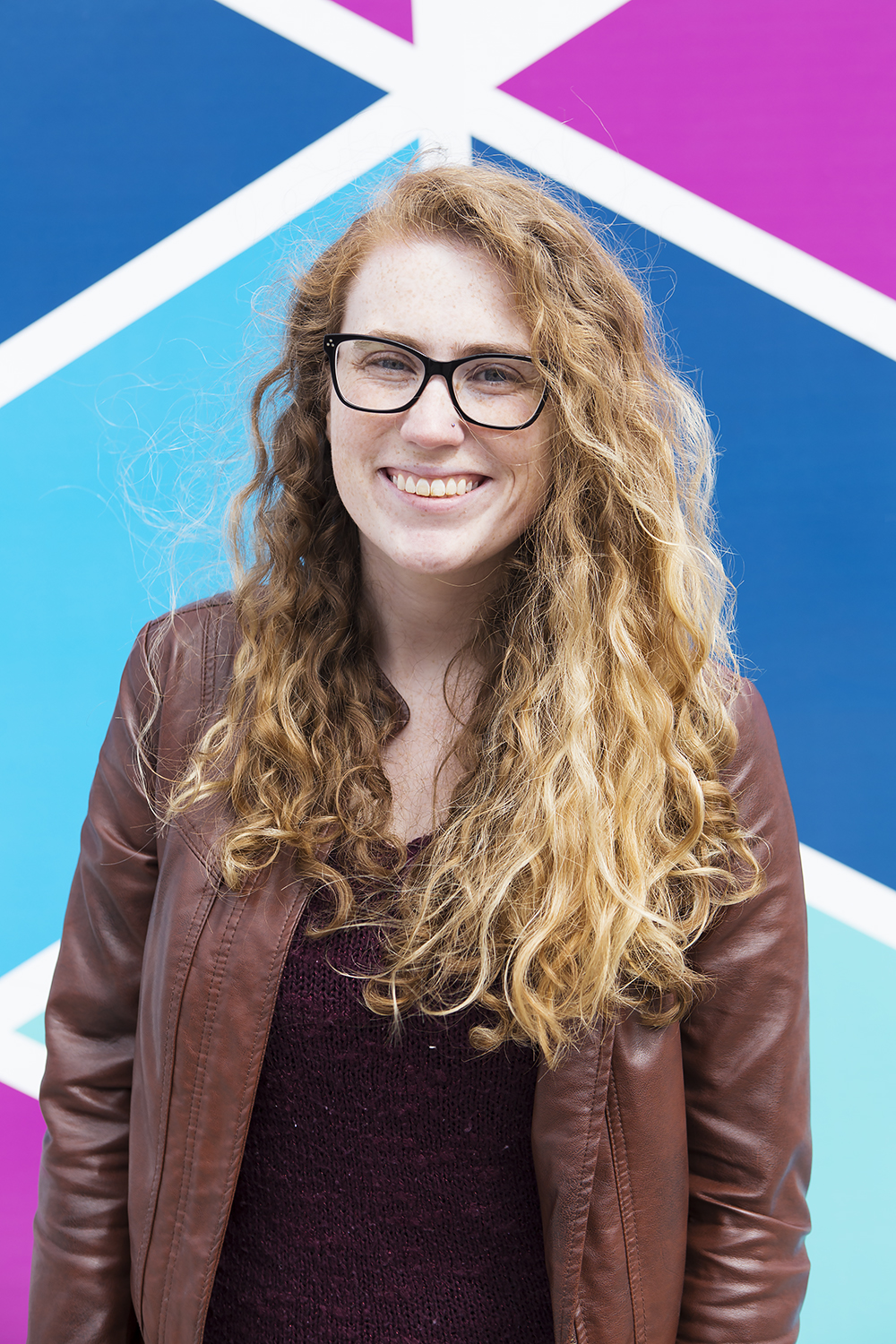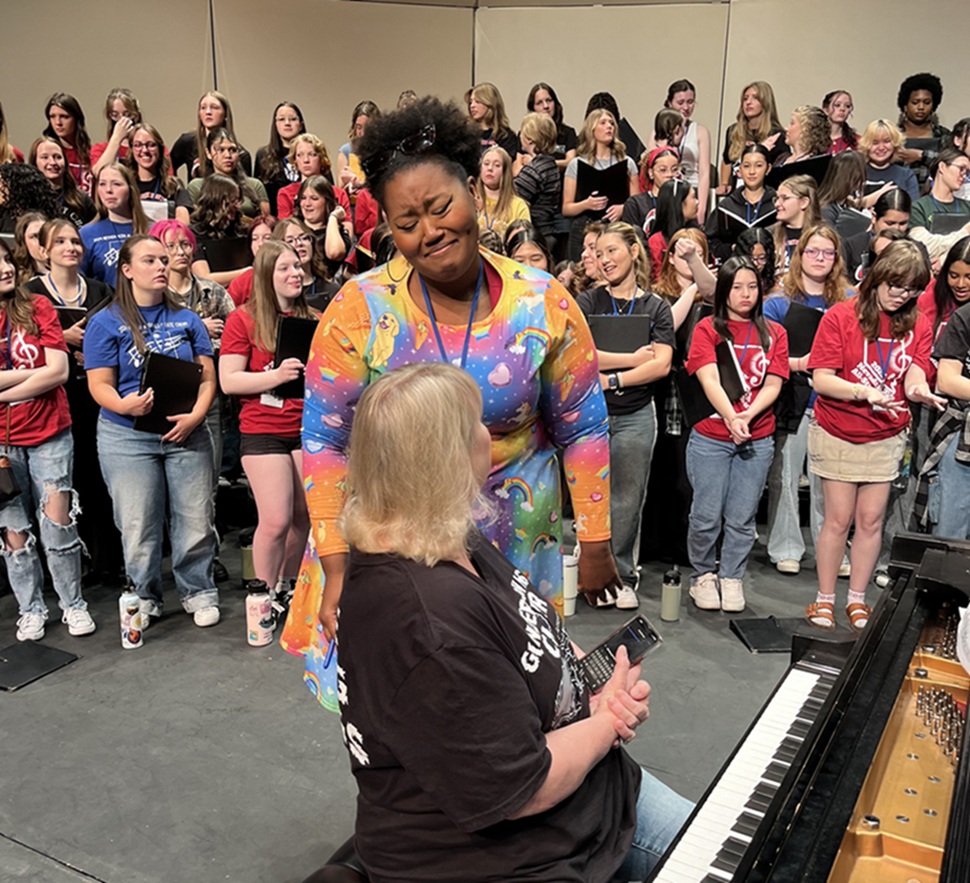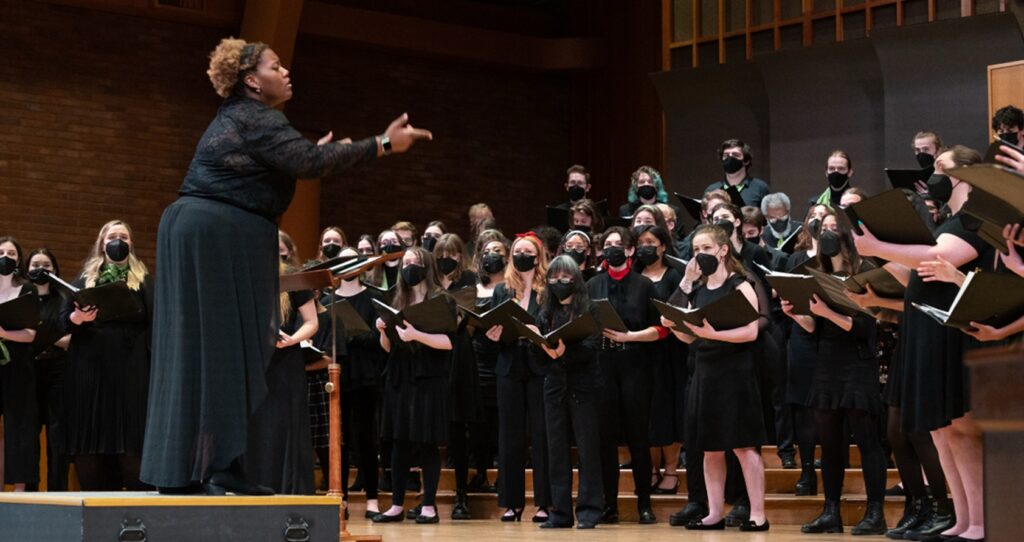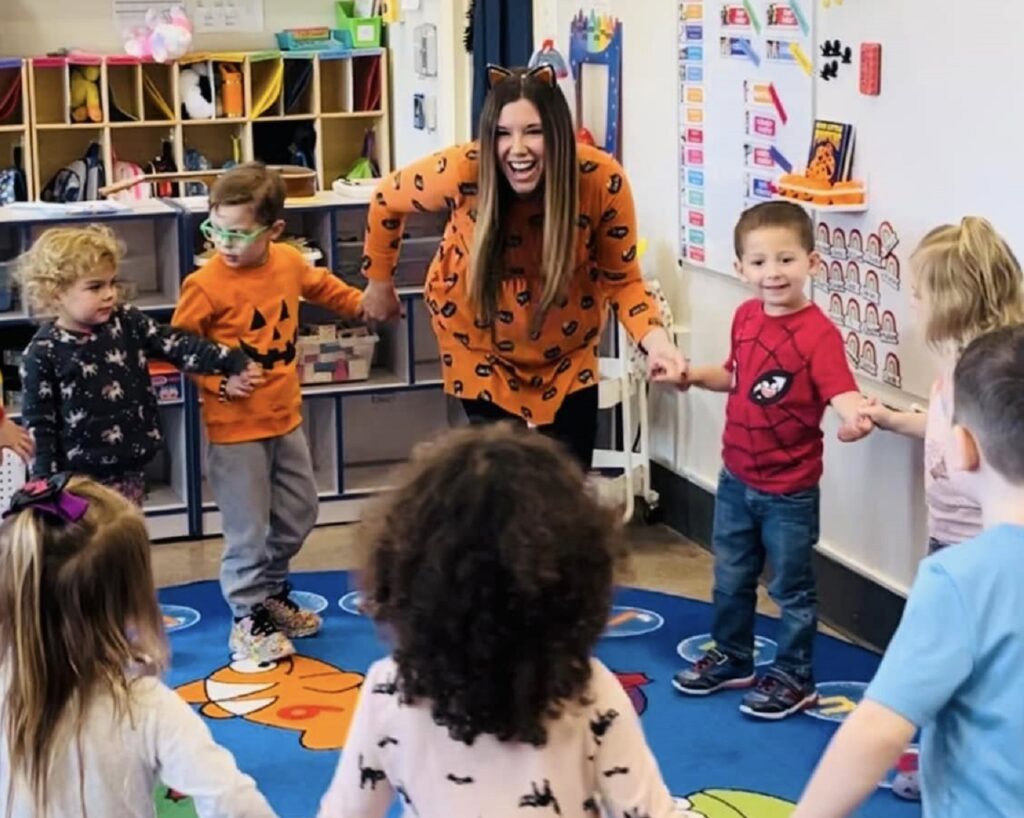Tagged Under:
The Nontraditional “Non-Semble”
A Wisconsin music educator uses nontraditional music ensembles to reach more students
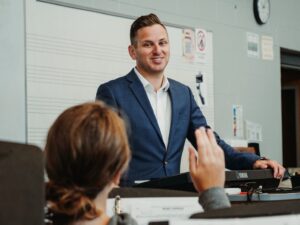
Most high school music programs contain a variety of ensembles, from concert band, to jazz band, to orchestra, to choir. At Middleton High School in Wisconsin, in addition to having a variety of ensembles, the music department also features what Director of Bands Douglas Brown affectionately calls “non-sembles” — opportunities for music education that fall outside the norm.
These non-traditional music classes include three levels of digital music production, plus a class focused on hip-hop music. By offering these options, Middleton High School has seen its music program nearly double; in addition to the 300 students in traditional concert band and 150 in orchestra, Middleton also has 130 students in hip-hop and about 170 in digital music. “Through all these classes that are nontraditional, we have seen a substantial growth in our program,” Brown says.
While studies have found that many high schools only have about 20 to 30% of the student body in the music program, Brown estimates that about 65 to 70% of the Middleton student population is involved, in part due to diverse music options. “In my mind, everyone can learn to love music,” he says. “We just have to find the right outlet for them.”
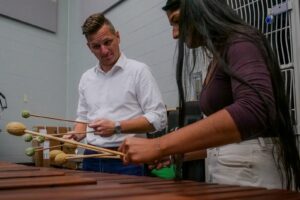
Teens Already Love Music
Brown spent much of his early career playing drum set as a gig musician. “The mindset as a drummer helped me realize that there are a lot of other art forms that can inspire people to make and engage with music,” Brown says. “They’re all equally valuable.”
When observing students around his school, Brown saw that students everywhere were already engaging with music in many different ways, both inside and outside of the school curriculum. For example, at his first teaching job, students brought their own guitars from home to practice in the school courtyard during breaks. At Middleton, he’s noticed kids showing an interest in rap and wanting to make their own beats.
One of his inspirations was the article, “Reaching the other 80%: Using technology to engage ‘non-traditional music students’ in creative activities” by Dr. David Brian Williams. This idea, presented at the 2007 University of Minnesota Technology Symposium, explains that most high schools are only reaching about 20% of their student population with in-school music options.
After reading Williams’ article, Brown asked himself: “What are we doing as music educators to capture that other 70 to 80% to help them engage in music?”
Because the research presented in the article indicated that many students who stop participating in music by high school likely won’t pick up music again in their adult life, Brown wanted to intervene and capture that other 80%. His solution was to create classes that matched the interests students were already displaying. “One of my goals has been to try to find creative ways to engage students, instead of forcing them into our boxes,” Brown says. “What boxes can we create that they already want to participate in?”
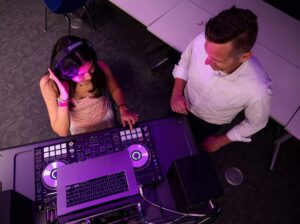
Mixing Genres
After introducing digital music and hip-hop classes, Brown noticed that, once kids are interested in music classes, their minds begin to open to even more possibilities. While students may originally join a wind ensemble or a hip-hop class depending on their initial interests, many students end up trying out more than one style. “We found that a lot of kids might take two or three years of hip-hop, and then they’ll join the band, or they’ll come play in the jazz band,” he says.
Brown doesn’t feel the need to keep the ensembles and non-sembles separate. In fact, a lot of their performances are collaborative. For example, the orchestra will record loops for hip-hop students to use in their songs. Often, band and orchestra concerts will include digital and hip-hop elements. “You bring the walls down when the jazz band does a funk hip-hop collaboration,” Brown says.
One of Middleton’s largest cross-department collaborations was a halftime marching band show that incorporated electronic elements. The show’s was about the evolution of music from acoustic to electric, and it featured a student DJ at center field. A wall of speakers was set up behind the DJ, and the marching band’s drill moved around the DJ setup. The show also included a hip-hop student as a vocalist rapping along with the band.
”There were times when the wind instruments would play, and that sound would be captured by the DJ, and then looped, sampled and put through the DJ system,” Brown says. “The opposite would happen, too. A DJ would play a loop that would then get picked up by the woodwind section, and they would play live loops on the instruments.”
Brown explains that, by having a speaker system in front of the ensemble, plus a speaker wall behind the DJ, the audience was forced to question if they were hearing acoustic or electric music throughout the show. “It was a creative amalgamation from students’ work,” says Brown, who was recognized as a 2024 Yamaha “40 Under 40” music educator. “I was proud of it, and it was unique.”
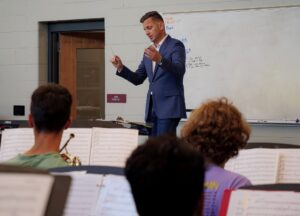
Real-Life Lessons
Middleton’s nontraditional classes have also expanded students’ performance opportunities, many of which translate to real-life work experience. For example, instead of hiring professional DJs for school dances, a student from the digital music classes was selected and paid a stipend. “They get to display their learning in front of all their peers,” says Brown. “And they get to look super cool!”
Similarly, students can gain work experience through a paid internship at Middleton’s Performing Arts Center, which has a recording studio that is booked by local musicians. Digital music students can work at the studio and help out with the recordings — and they gain work experience and earn a little extra money.
These real-world work opportunities have translated to success in students’ lives beyond high school. “We have kids who have gone on to [receive] degrees in recording engineering at some of premiere colleges,” Brown says.
Digital music has been a way to get hundreds of students involved with music as both educational enrichment and as a career possibility. “I think we should have far more digital music and hip-hop music programs throughout the country,” Brown says. “We should be responsive and make sure that everyone can engage in music, no matter what their interests are.”









